

This vehicle was built in 1885 by Gottlieb Daimler and Wilhelm Maybach as a testbed for the internal combustion engine which they were developing. Their aim was not to produce a practical motorcycle, but just a lightweight vehicle for testing the engine, which was then not powerful enough to drive a four-wheeled car, which was Daimler's goal. It was first ridden in November 1885 by Daimler's son Paul, then modified somewhat in 1886 before being abandoned, having served its purpose. The Reitwagen lasted until 1903, when it was destroyed in a fire at the Daimler factory in Seelberg-Cannstatt. Many replicas have been made since, which are to be seen in museum collections worldwide.
The Reitwagen is often described as the world's first motorcycle, but this claim is rather dubious. On the one hand, it relies on defining a motorcycle as having to have an internal combustion engine to exclude two steam powered vehicles from the 1860s and one from 1884. On the other, it is somewhat questionable whether this is really a motorcycle at all, as it could not be ridden on its two main wheels alone, relying on a pair of "trainer wheels" to maintain stability. On this basis the tricycles of Enrico Bernardi in 1882 and Karl Benz in 1885 might have as good a claim.
The model was designed by Ladislav Jakubčo and published in a collection of 31 models by this designer, by Perfekt in Slovakia. No scale is given, but some uncorroborated dimensions of the original which I have seen quoted suggest a scale of 1:12. This is given a little extra credibility by the fact that the other motorcycle in the collection (a Suzuki R750) was also published in Fifik magazine, and is described there as being 1:12. Accordingly, I scaled it by approximately 86%, to get my standard scale of 1:14. The model is a representation of the 1886 version, though it is quite a free interpretation.
The fit of the parts is, like many models in the Czech/Slovak tradition, quite approximate. I redrew the frame to ensure that rectangular cross-sections were indeed rectangular, and also to add thickness to the curved and tapering front beams. I also redrew the wheels with equally-spaced spokes, and added extra rim and hub pieces to give some depth. A few other pieces required a little adjustment, too.
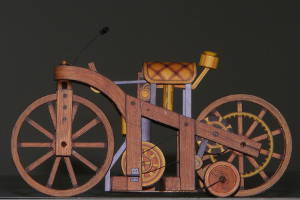
|
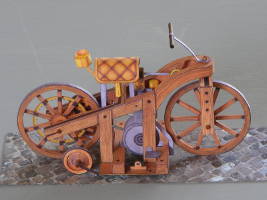
|
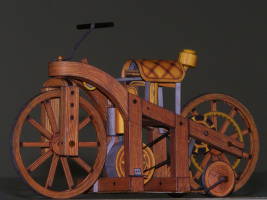
|
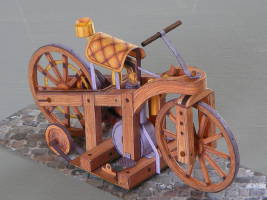
|
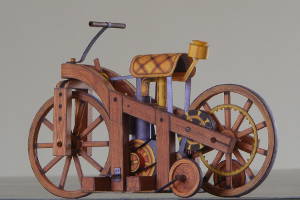
|
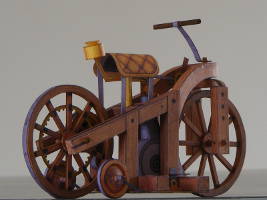
|